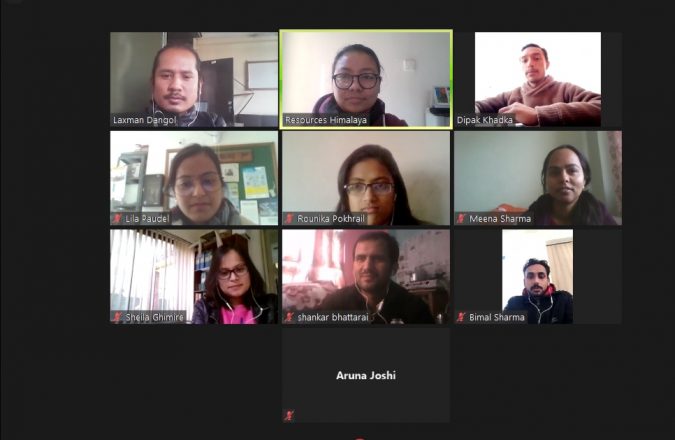
By Sushila Bajracharya |
Lalitpur—Environmental Graduates in Himalaya (EGH), in association with Resources Himalaya Foundation (RHF) organized Science Journalism Training (SJT) via virtual platform.
In virtual Training, fourteen graduated students’ including researchers were participated—taught for digital Journalism tools, Journalist and its role, Science and Pseudoscience, Basic news parameter, Generating story idea about scientific research, research publication into news etc.
Nowadays, misinformation and unreliable information related to the environment can lead science to confusion rather than fact. So this type of training motivated researcher can publish their popular science article for the benefit of society, according to the organizer.
In Nepal, people and the government are still unaware about science. Thus Science Journalism has a greater responsibility to overcome such rumors, according to a report of “Science Media and People one day policy dialogue” held in the Department of Information Kathmandu, Nepal on March 31, 2013. “With this acknowledgement, Students of Science and Technology should write their own research story to the public benefits—so that—RHF organized such SJT, which will be fruitful to the researchers,” said Dr. Dinesh Raj Bhuju, General Secretary of RHF.
“Enlightened the importance of S&T, and it’s complications for dissemination of news in a proper manner which sometimes possess the opposite reaction too, ” he added.
Participants like SJT course content that was taught in training, but they were unsatisfied in disturbance while communicating due to poor internet connections and technical issues during training.
One of the participants Dipak Khadka highlighted training would be more efficient, if organized via physical classes rather than virtual.
In addition, EGH will organize such a type of SJT for science students in future. SJT was taught by Laxman Dangol, Editor of RevoScience News, who has been working in the field of science journalism since more than ten years.








